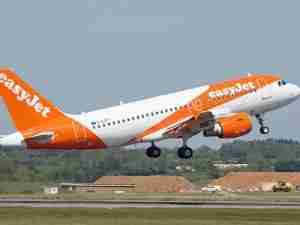A crucial safety system that’s relied on to avoid potentially fatal collisions at major US airports is aging and plagued by outages that have left travelers unprotected for months at a time. At some airports, it hasn’t ever been installed.
The technology — which tracks vehicles on or near runways to alert controllers before impending crashes — often uses decades-old radar equipment for which spare parts are difficult to find, according to government data and the president of the union representing air-traffic controllers.
Keeping track of ground traffic at airports is particularly important at a time when runway-safety incidents appear to be surging. This year, there have been at least eight incidents involving airliners that aviation regulators ranked as severe, or that prompted probes by US accident investigators. That’s almost double the average for each full year since 2018.
While none of those near collisions have been directly linked to an outage of Airport Surface Detection Equipment-Model X, or ASDE-X, gaps in service can leave the aviation system vulnerable. With no clear alternative available, advocates are pushing to add the system — which is highly effective when it’s functioning well — to more landing strips after some of the most serious incidents happened at airports without the technology.
“They are the last line of defense in preventing a massive collision between two airliners,” said Jeff Guzzetti, former head of accident investigations at the Federal Aviation Administration. “I’m shocked that it hasn’t been put in more airports.”
Three people familiar with the runway safety systems said that they have suffered multiple failures in recent years. They asked not to be identified discussing malfunctions that aren’t public.
At Dallas-Fort Worth International in Texas, the third-busiest US airport by number of flights, the ASDE-X system was out of service for at least six days last May and June, according to one of the people. At Chicago O’Hare, an outage last July lasted as long as a week. At Los Angeles International, 39 separate failures meant that the system was unavailable for a total of 160 days from 2016 through 2018, according to an FAA report reviewed by Bloomberg.
Together, the three airports processed more than 80 million travelers in 2021, according to FAA data.
The FAA said in a statement it will keep ASDE-X and a similar runway safety system operating and has been seeking newer technologies. In March, the regulator invited officials to a safety summit, after which it called on the aviation industry to develop options that could either replace ASDE-X or add protections at new airports.
The agency defended the system’s overall reliability, saying it functions almost 99% of the time and that airports where it’s located cover the majority of commercial flights. The FAA has taken multiple other measures, such as improved runway markings and training, to lower risks, it said.
No Spare Parts
ASDE-X and its sister system, known as Airport Surface Surveillance Capability, use radar and global-positioning technology to identify trucks and other vehicles on the ground.
When planes get close to a collision, the system sounds alarms in air-traffic control towers so controllers can let pilots and ground operators know about the potential danger. The data also feeds a separate runway safety tool: lights that are in place at 20 US airports to warn pilots and vehicle drivers away from occupied runways.
The main systems, in use at 43 large US airports, were once seen as a huge safety improvement designed to address several fatal crashes. Now, the 1980s-era technology is prone to breaking down, and industry representatives want the FAA to add it to more airports and update it. The National Transportation Safety Board has been calling for an expansion of the safety system to all commercial airports since 2000.
“There are no spare parts in the event of a radar failure,” Rich Santa, president of the National Air Traffic Controllers Association union said in a statement. “We need funding for sustainment of existing technologies, as well as funding for new systems and new technologies.”
Saab Sensis Corp., a division of Saab AB, is the current manufacturer of ASDE-X but didn’t supply its older radars, which often date as far back as many as 40 years. A representative for the company had no immediate comment.
Keeping those heavy, outdated radars operating is a growing challenge, with multiple aging technology systems operated by the FAA, said Dave Spero, president of the Professional Aviation Safety Specialists union that represents about 7,000 technicians at the regulator.
There are, potentially, better and cheaper alternatives. ASDE-X is expensive, which is part of the reason it wasn’t installed at every airport when it was developed. It cost $550 million to fit at the first 35 airports, according to a 2007 Transportation Department Inspector General report. The FAA has been looking into other technologies to track planes and vehicles on the ground, including the GPS systems that they already use for planes in the air, but some experts argue that radar should still be used as an additional safety net.
No Warning
A near miss last year in Connecticut illustrates the hazards of long-term outages. On the night of April 30, pilots landing a large jet at Bradley International Airport near Hartford had to rely on their own wits to spot a truck that had strayed onto a runway.
The ASDE-X at the airport had failed in November 2021 and wasn’t repaired until July 2022, according to two people familiar with the facility. FAA technicians had difficulty getting replacement parts due to the pandemic and supply-chain issues, said another person. They asked not to be identified discussing the sensitive topic.
The plane came to a stop within 150 to 200 feet (46 to 61 meters) of the truck after pilots slammed on the brakes, according to a government report.
At airports that aren’t equipped with the warning devices, the calls can be even closer.
On Feb. 4, pilots approaching Austin-Bergstrom International in Texas on a FexEx Corp. cargo jet called off their landing at the last moment. The plane flew within 100 feet or less of a Southwest Airlines Co. plane that had already been cleared to take off, according to the NTSB. The Austin air-traffic tower has no technology showing the location of planes on or near the ground, and the two aircraft were operating in thick fog.
“Austin is the fastest-growing airport in this country, and it needs to have that surveillance technology,” Sharon Pinkerton, senior vice president for legislative and regulatory policy at the Airlines for America trade group, told US House lawmakers at a hearing on March 23.
A similar incident at John F. Kennedy International Airport shows how effectively the technology can avert disasters when it’s up and running, .
On January 13, an American Airlines Group Inc. carrying 149 people taxied across a runway where a Delta Air Lines Inc. plane with 159 aboard was accelerating for takeoff, according to the NTSB. When an alert sounded in the control tower, the Delta pilots were told to cancel their takeoff. They never got closer than 1,400 feet from the other jet.










